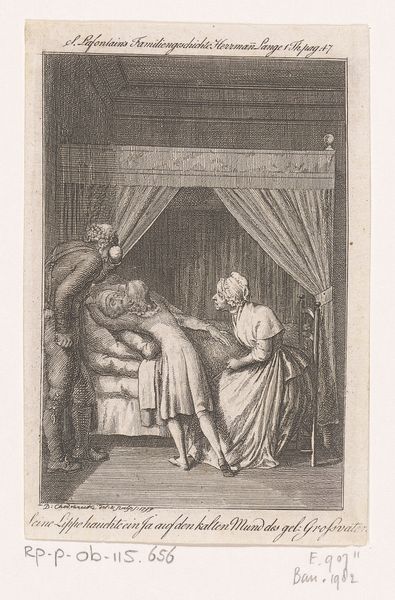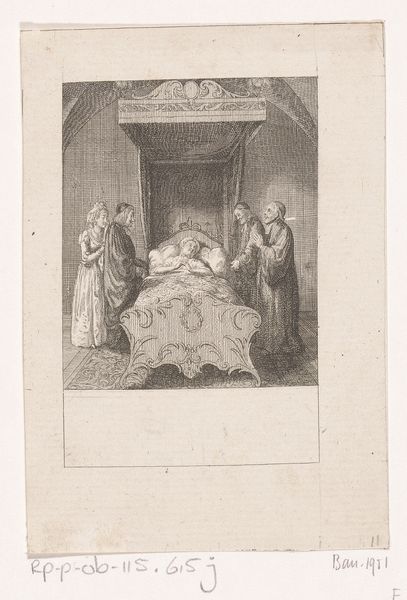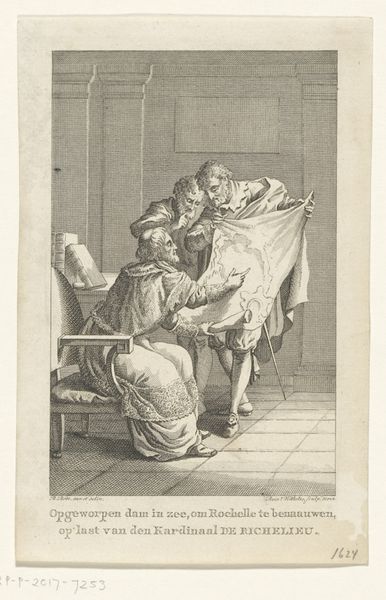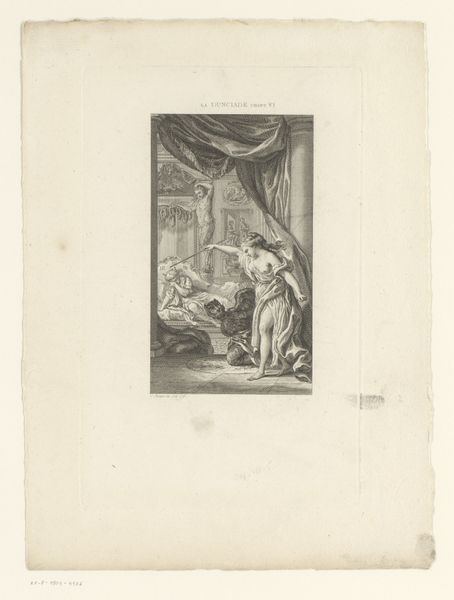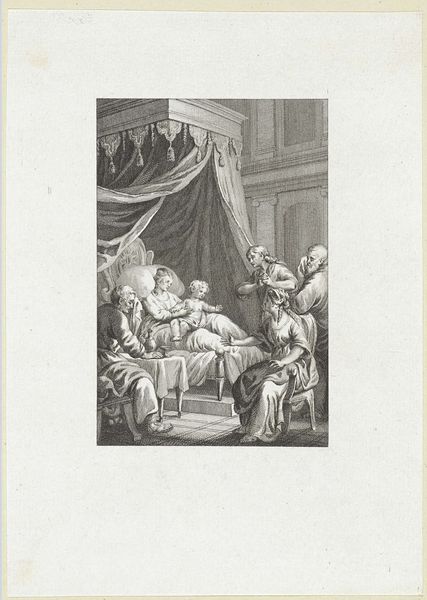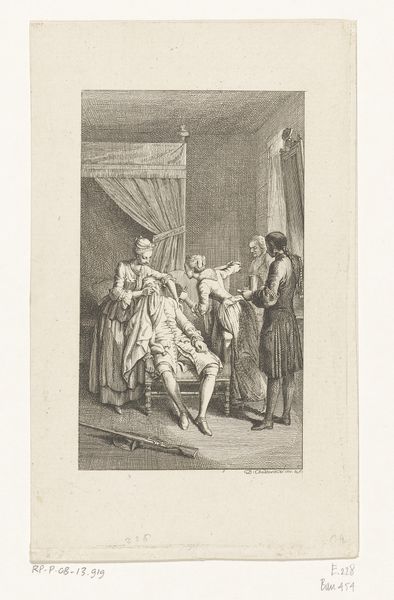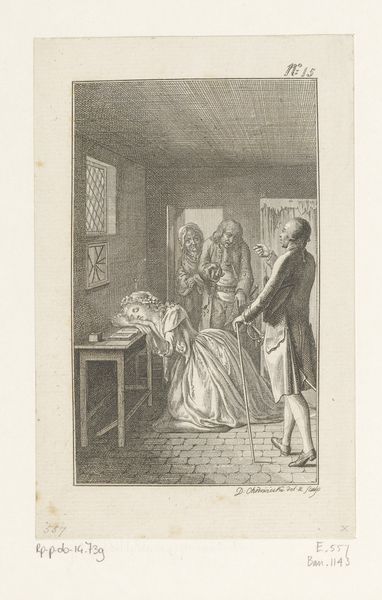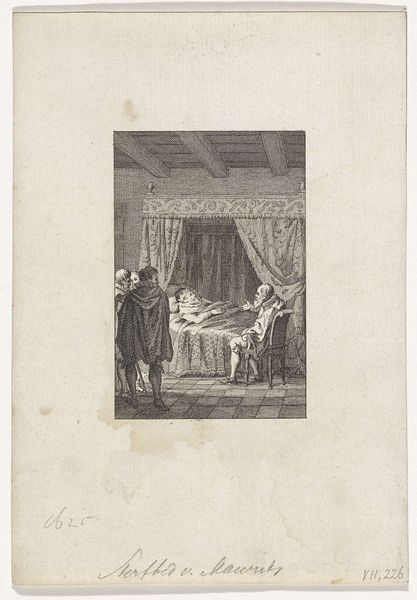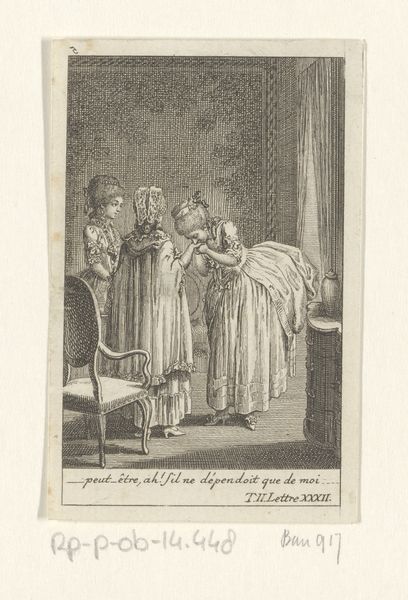
print, engraving
#
narrative-art
# print
#
old engraving style
#
figuration
#
romanticism
#
line
#
genre-painting
#
history-painting
#
engraving
#
realism
Dimensions: height 150 mm, width 94 mm
Copyright: Rijks Museum: Open Domain
Curator: This is Daniel Nikolaus Chodowiecki's engraving, "Vader krijgt zijn nieuwgeboren kind in de armen," created in 1797. Editor: It strikes me immediately as a domestic drama, almost theatrical. The linear quality gives it a sense of intimacy, despite the formality of the scene. Curator: Indeed. Chodowiecki, active in late 18th-century Berlin, often depicted scenes of bourgeois life. This particular work offers insight into the social and familial roles prevalent at the time, especially regarding childbirth and paternity. Editor: Look at the composition, the strong verticals formed by the figures against the horizontality of the bed and room, creating this structured tableau. And the density of the lines varies, focusing our attention on the father and the newborn child. Curator: The father's reception of the child would be an interesting focal point when considered through the patriarchy of the time, as he stands tall, taking responsibility while children clutch to their mothers' skirts in the lower third. It presents the notion of the passing on the family legacy. The act of taking the child reinforces paternal authority and generational power structures. Editor: I'm curious, do you see any stylistic tension between the realist style that tries to depict real-life occurrences and the somewhat romantic undertones, considering the heightened emotions and delicate execution? Curator: I do think there's that friction. Chodowiecki often blended keen observation with the emotional sensitivity characteristic of the Romanticism. Consider the sentimental interpretation of familial love contrasted with rigid societal expectations, capturing tensions inherent to the era. Editor: Thank you, viewing the engraving alongside a study on family dynamics gives such new meaning to a somewhat typical presentation of domestic bliss. I do wish we knew which family he was portraying to create this image, or better understand Chodowiecki's role as the voyeur. Curator: It is those layers of context that can add so much richness when understanding pieces such as this one, it highlights both the power dynamics and expectations in family relations during this transformative era.
Comments
No comments
Be the first to comment and join the conversation on the ultimate creative platform.

